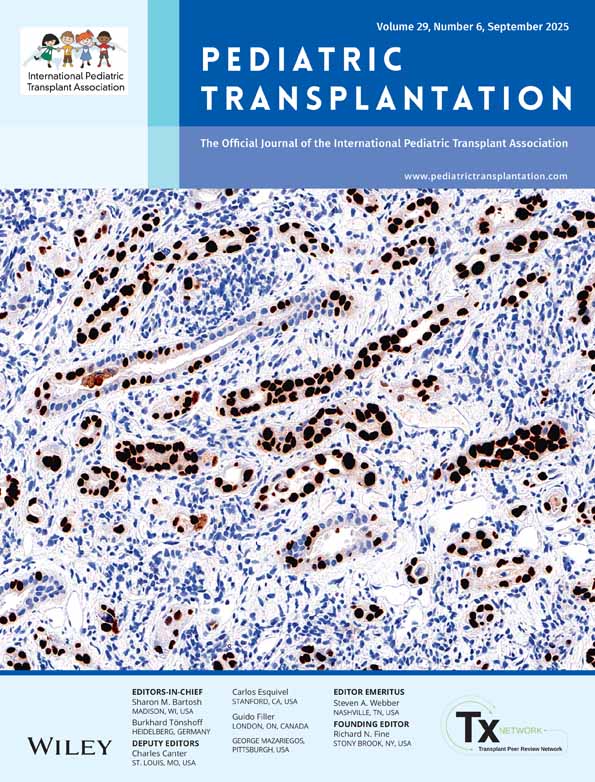Fulminant recurrence of atypical hemolytic uremic syndrome during a calcineurin inhibitor-free immunosuppression regimen
Abstract
Abstract: Recurrence of hemolytic uremic syndrome (HUS) after kidney transplantation is frequent, occurring almost exclusively in patients with atypical HUS, which is not caused by Escherichia coli gastroenteritis and in which diarrhea is absent. Calcineurin inhibitors are associated with recurrence of HUS. In two children who underwent living donor kidney transplantation for atypical HUS, we pre-emptively employed sirolimus in a calcineurin inhibitor-free immunosuppression regimen. Both children had excellent early graft function, yet both developed severe recurrent disease and subsequently lost their grafts. Avoidance of calcineurin inhibitors did not prevent recurrence of severe HUS and graft loss. Transplantation for severe atypical HUS remains problematic.




